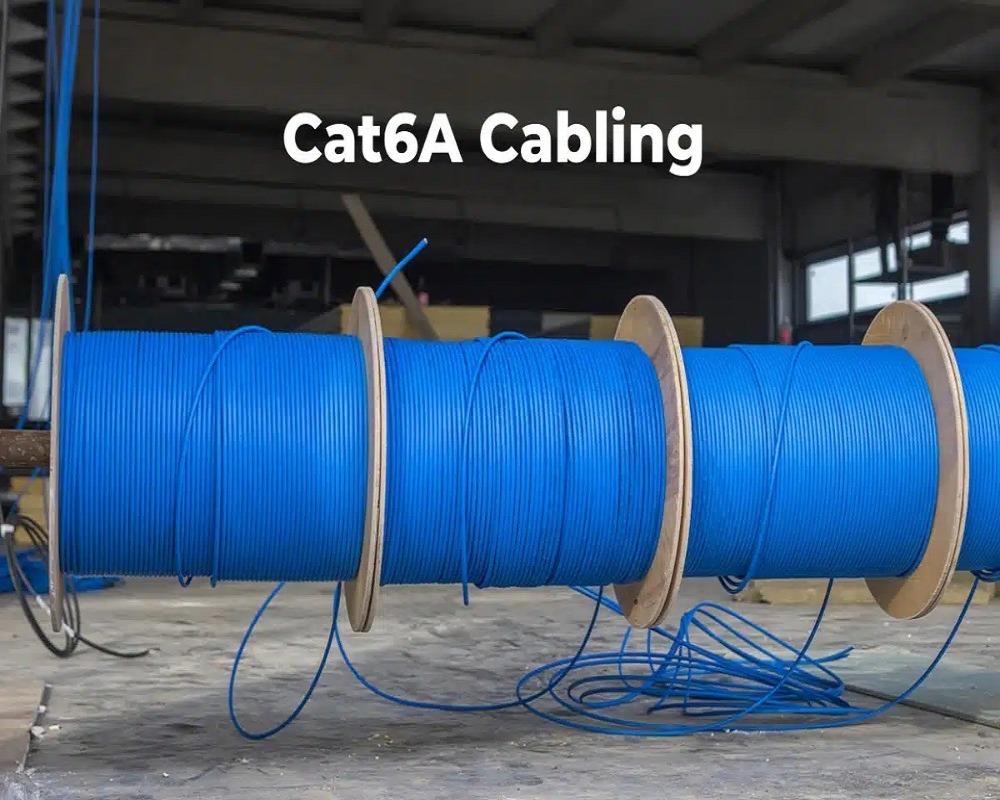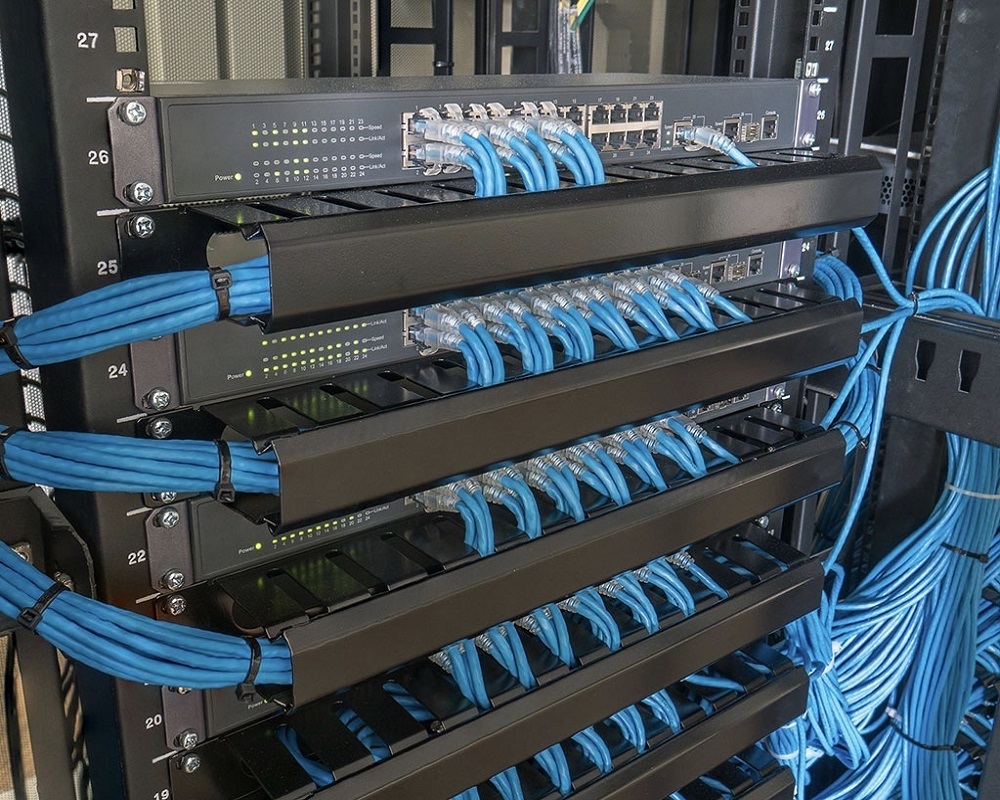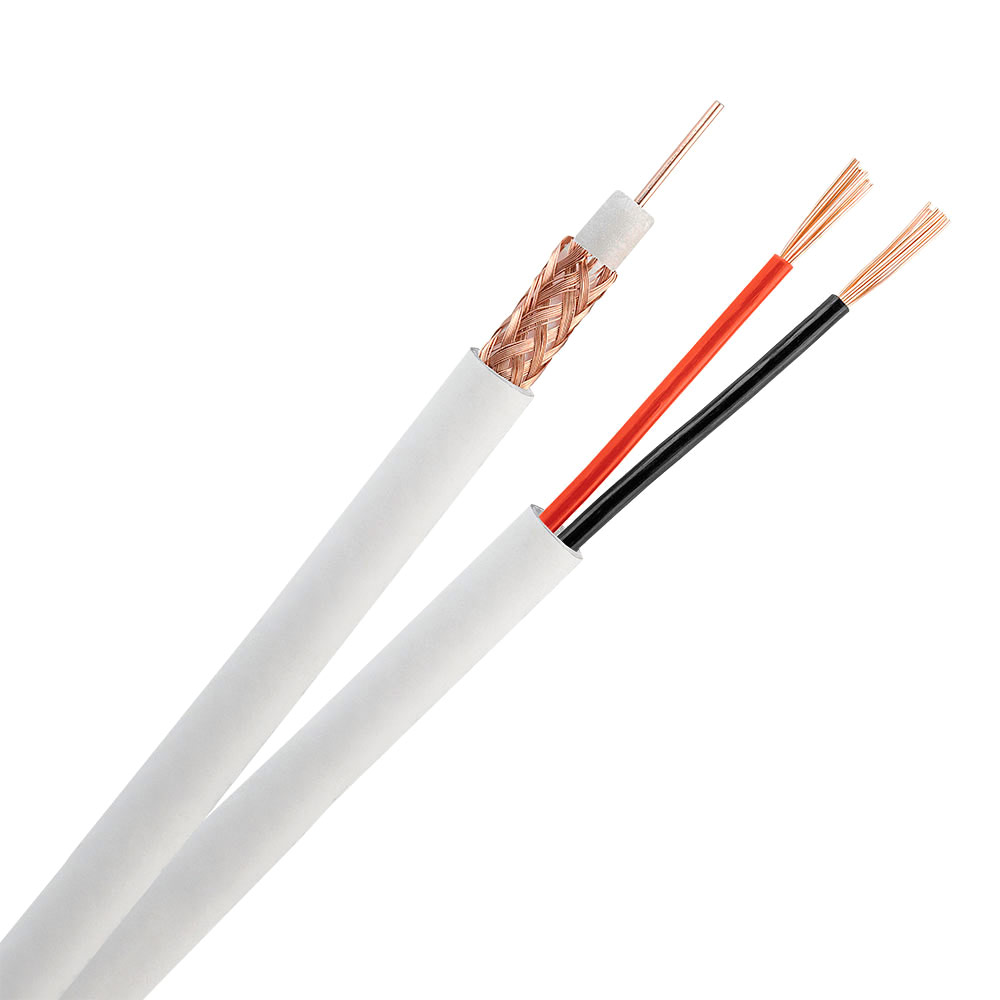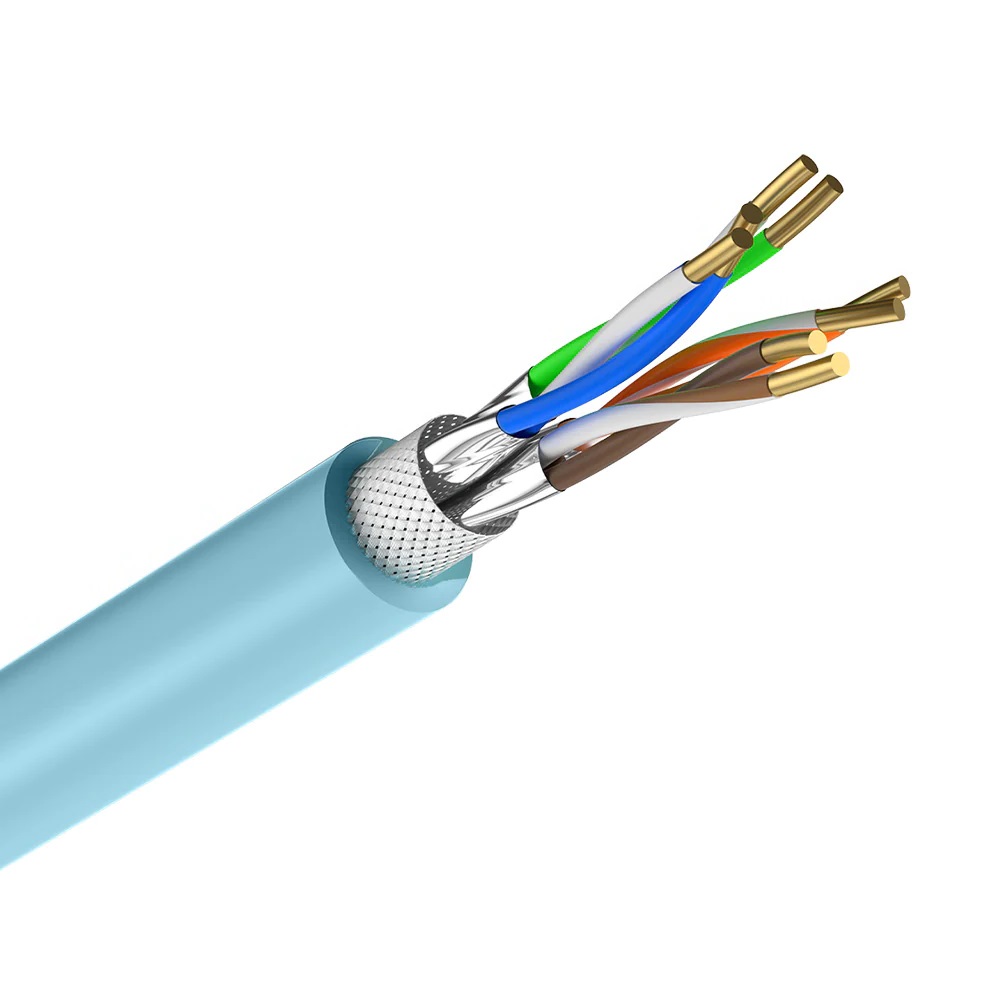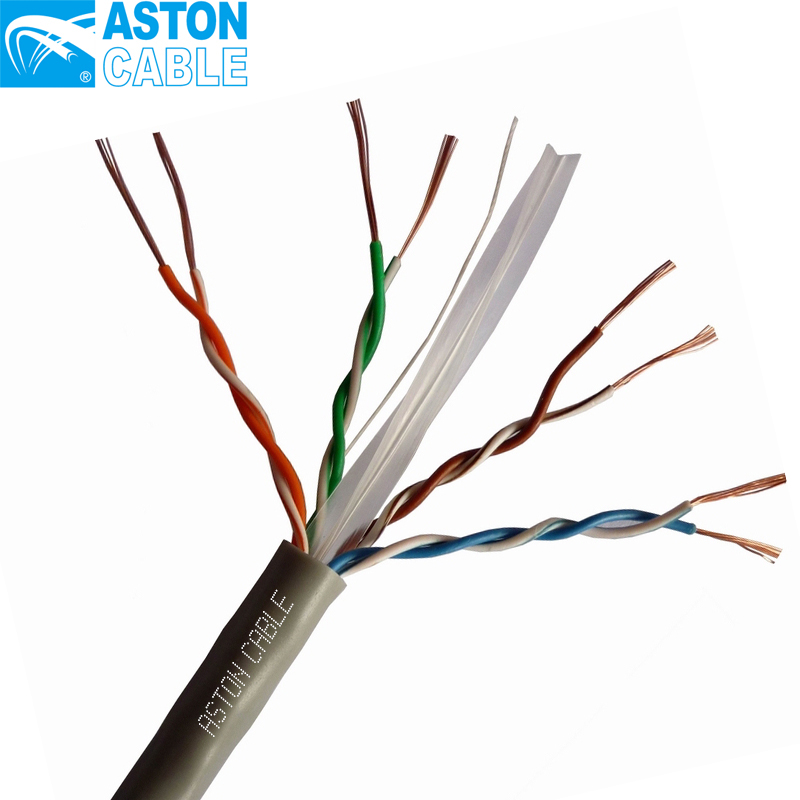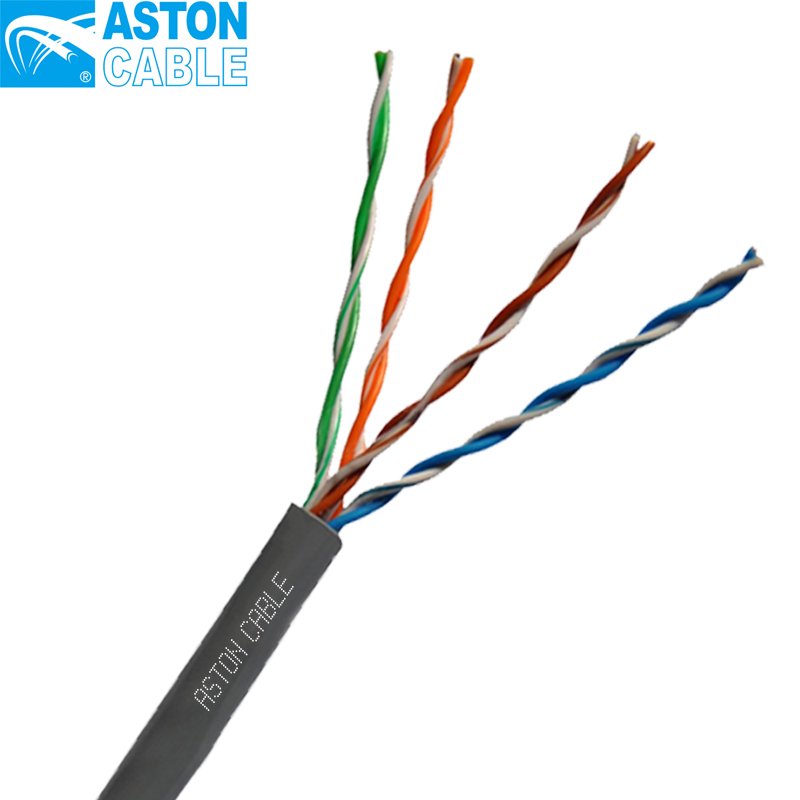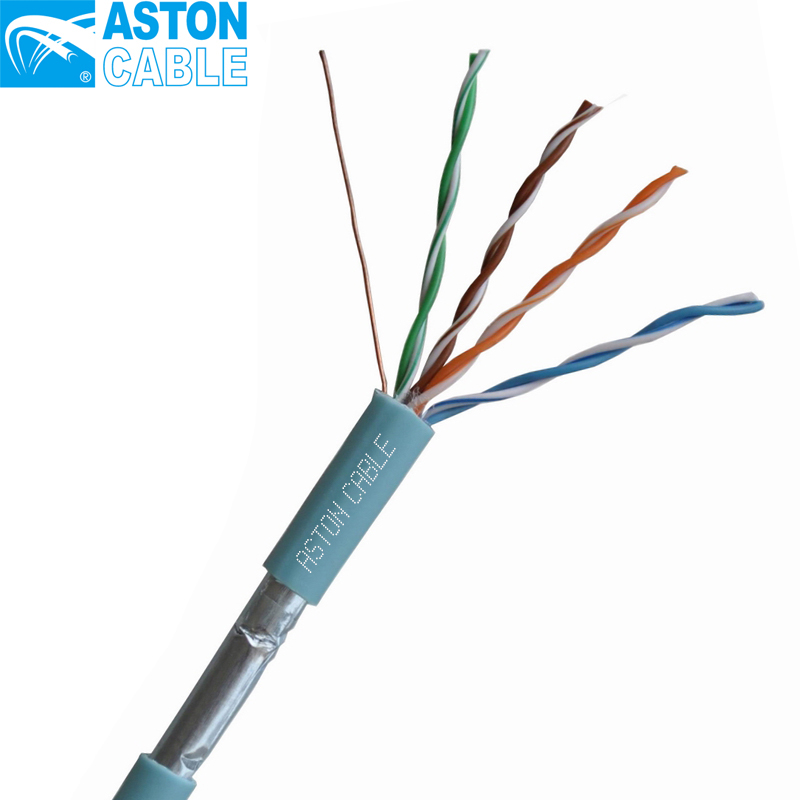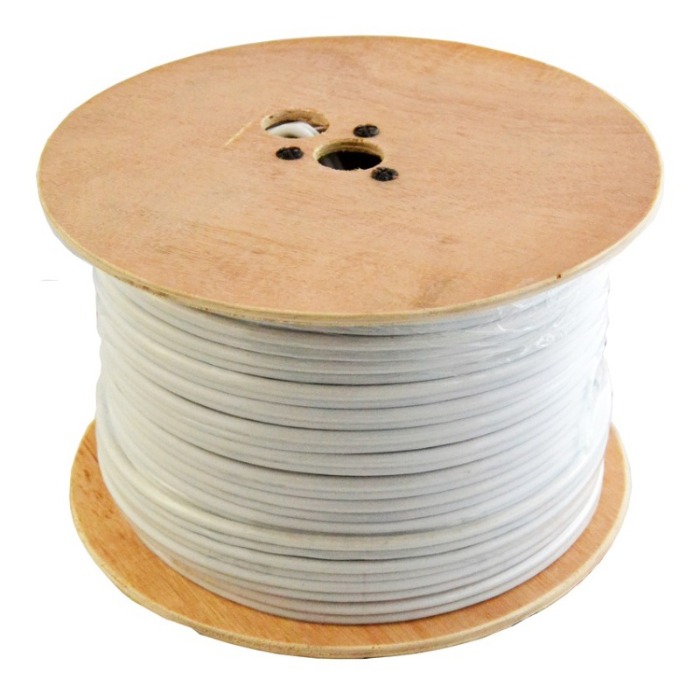Product Main Parameters
| Parameter | Specification |
|---|---|
| Conductors | SOLID BARE COPPER |
| Category | CAT5E |
| Shield | UTP |
| Jacket | PVC/LSZH |
| Frequency | 100MHz |
| Compliance | IEC, CE, RoHS |
Common Product Specifications
| Specification | Details |
|---|---|
| Pairs | 4 Pairs |
| AWG | 24AWG |
| Insulation | PE |
| Daily Output | 500KM |
| MOQ | 200 Rolls |
Product Manufacturing Process
Manufacturing Cat5e cables involves precise steps to ensure quality and efficiency. Starting with high-grade copper as the conductor, the wire drawing process achieves desired thickness. The copper is insulated with polyethylene through extrusion for electrical protection. Following this, pairs are twisted for noise reduction and wrapped, forming the cable's core. A jacket, either PVC or LSZH, is extruded as outer protection. Rigorous testing evaluates physical and electrical properties. According to the paper 'Advancements in Networking Cable Technology', maintaining a clean, controlled environment throughout these steps is crucial for product integrity, ensuring high-performance standards are met by any top supplier, optimizing cat5e cable price competitiveness in the market.
Product Application Scenarios
Cat5e cables are essential in various networking environments, from residential setups to complex commercial networks, owing to their reliable data transfer capabilities. A study in the 'Journal of Network and Systems Management' highlights their role in efficiently supporting Ethernet connections up to 1000 Mbps over short to medium distances, making them suitable for both home users and businesses looking for cost-effective solutions. They are widely used in structured cabling for office buildings, providing a backbone for data, voice, and video transmission. As emphasized by reputable suppliers, understanding cat5e cable price in different applications allows for strategic purchasing aligning with network demands.
Product After-Sales Service
Our supplier offers comprehensive after-sales support, including technical assistance, warranty options, and a dedicated customer service team to address any issues or queries, ensuring satisfaction with your cat5e cable purchase.
Product Transportation
We ensure secure and timely shipping through trusted logistics partners, so your cat5e cable order reaches you in excellent condition, whether domestically or internationally.
Product Advantages
- Cost-effective cat5e cable price from a trusted supplier.
- Excellent performance for up to Gigabit Ethernet speeds.
- Durable construction with high-quality copper conductors.
- Compliance with international standards like CE and RoHS.
- Versatile for a wide range of networking applications.
Product FAQ
What is the maximum length I can use for Cat5e cables without losing performance?
Cat5e cables can support lengths up to 328 feet or 100 meters without losing performance. For distances beyond this, signal boosters or higher category cables might be necessary.
Can Cat5e cables support Gigabit Ethernet?
Yes, Cat5e cables are capable of handling Gigabit Ethernet speeds (1000 Mbps) under ideal conditions, making them a cost-effective choice for many networking setups.
How does a supplier determine cat5e cable price?
Factors influencing cat5e cable price include material quality, length, shielding type, and market demand, among others. Bulk purchases typically offer a lower cost per unit.
Are Cat5e cables backward compatible with older Ethernet standards?
Yes, Cat5e cables are backward compatible, meaning they will work with older Ethernet standards like 10Base-T and 100Base-TX, while still offering the capability for higher speeds.
What's the difference between UTP and STP Cat5e cables?
UTP (Unshielded Twisted Pair) cables are commonly used for most residential and office networks due to their ease of installation and lower cost. STP (Shielded Twisted Pair) cables add a layer of protection against electromagnetic interference, typically at a higher price.
Can I use Cat5e cables for outdoor installations?
While standard Cat5e cables aren't designed for outdoor use, special outdoor-rated versions are available, featuring UV-resistant jackets and water-tight construction to withstand environmental factors.
What maintenance do Cat5e cables require?
Cat5e cables require minimal maintenance. Regularly check connections for wear and ensure cables are not overly bent or pinched, which can degrade performance.
How do I choose the right supplier for Cat5e cables?
Look for a supplier with a solid reputation, competitive cat5e cable price, and strong customer reviews. Verify their compliance with international standards for quality assurance.
What does 'OEM' mean on Cat5e cables?
'OEM' stands for Original Equipment Manufacturer, indicating that the cable may be branded by Aston or another brand under license, without compromising on quality or performance.
What are the common safety standards for Cat5e cables?
Cat5e cables should meet CE and RoHS standards, ensuring they are safe and free from harmful substances, with flame-retardant jackets to reduce fire risk, as per supplier specifications.
Product Hot Topics
Choosing a Supplier for Cat5e Cable: Key Considerations
When selecting a supplier for Cat5e cables, it's vital to evaluate their reputation, product quality, and cat5e cable price offerings. Opt for suppliers with comprehensive warranties and customer service support. Look for reviews and testimonials that mention timely delivery and post-purchase support. Additionally, consider their product range and ability to meet bulk order requirements, which often reflects their capacity to handle diverse customer needs effectively.
How Market Trends Influence Cat5e Cable Price
The price of Cat5e cables is subject to fluctuations based on market trends, raw material costs, and technological advancements. As demand for higher-speed cables grows, the cost of older standards like Cat5e may decrease, presenting valuable opportunities for cost-effective networking solutions. Staying informed on these trends ensures you can capitalize on shifts to optimize your budget and network infrastructure.
Understanding the Role of AWG in Cat5e Cable Performance
American Wire Gauge (AWG) is crucial in determining the performance and durability of Cat5e cables. A standard 24AWG is sufficient for most networking tasks, providing a balance between size and conductivity. Thinner wires may not perform as well over longer distances, while thicker wires, although better at maintaining signal integrity, can be bulkier and more expensive. Choosing the right AWG is essential for ensuring desired network performance without inflating the cat5e cable price with unnecessary features.
Evaluating the Environmental Impact of Ethernet Cables
In today’s environmentally conscious world, choosing cables with minimal ecological impact is becoming increasingly important. Many suppliers now offer Cat5e cables that comply with RoHS criteria, limiting the use of hazardous substances. PVC-free jackets or LSZH options reduce harmful emissions in case of fire. As consumer awareness grows, selecting eco-friendly options not only supports global sustainability efforts but can also strengthen corporate responsibility profiles, if you are buying for business purposes.
Why Shielding Matters: UTP vs. STP in Networking
Shielded vs. unshielded is a common question in networking, particularly for environments with potential interference. UTP (Unshielded Twisted Pair) provides adequate performance for most standard setups, but STP (Shielded Twisted Pair) is advantageous in industrial environments where electromagnetic interference is prevalent. Understanding these differences and consulting with your supplier can help select the most appropriate type for your needs, balancing performance and cat5e cable price.
The Future of Networking: Is Cat5e Still Relevant?
With advancements in network technology, questions arise about the continued relevance of Cat5e cables. While higher-category cables offer enhanced speeds and capabilities, Cat5e remains a cost-effective solution for many applications. Its ability to handle Gigabit Ethernet makes it suitable for numerous residential and business needs, especially where future-proofing isn't the primary concern. Understanding its benefits and limitations helps in deciding if it's the right choice for current and future projects.
Installation Tips for Optimal Cat5e Performance
Proper installation of Cat5e cables is crucial in achieving optimal performance. Avoid sharp bends, which can damage the internal structure, and maintain a suitable distance from potential sources of interference like power lines or fluorescent lights. Following these guidelines ensures that you maximize the cable's performance and lifespan, making your investment in cat5e cable price a wise one.
Comparing Cat5e to Other Ethernet Cable Categories
When comparing Cat5e to other Ethernet categories, it's essential to consider speed requirements, installation environment, and budget constraints. Cat6 or Cat6a may offer higher speeds, but for many users with modest needs, Cat5e provides an ideal balance of cost and performance. Consulting with a knowledgeable supplier can help clarify which option best matches your specific networking needs, ensuring satisfaction with your purchase.
Enhancing Efficiency with Structured Cabling
Structured cabling using Cat5e cables can significantly enhance network efficiency and organization. It allows for greater flexibility and scalability, ideal for expanding businesses. Implementing structured systems not only improves operational speed but also simplifies maintenance and troubleshooting. Investing in high-quality cabling from a trusted supplier ensures reliable performance and minimizes long-term infrastructure costs.
Overcoming Common Challenges in Network Cabling
Network cabling presents various challenges, from ensuring signal integrity to managing physical layout constraints. Common hurdles include dealing with EMI, negotiating around physical obstructions, and ensuring future scalability. Working with experienced suppliers and using quality materials can mitigate these issues, allowing your Cat5e installation to meet performance expectations while keeping cat5e cable price within reasonable bounds.
Image Description
